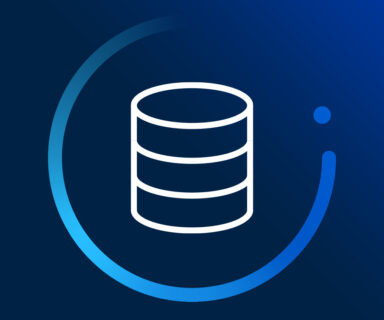 Jenny Hooks is the Revenue Marketing Manager, Americas Inbound at Cisco. She’s been at Cisco for eight years in a variety of roles spanning marketing execution, marketing automation and strategic marketing. She is currently responsible for digital revenue marketing for the Americas which includes the U.S., Canada, and Latin America. As part of her role she is responsible for delivering Sales Qualified Leads for those regions through 3rd party digital channels, Cisco.com, and earned social platforms, to drive actionable revenue and opportunities for both Cisco sellers and channel partners.
Jenny Hooks is the Revenue Marketing Manager, Americas Inbound at Cisco. She’s been at Cisco for eight years in a variety of roles spanning marketing execution, marketing automation and strategic marketing. She is currently responsible for digital revenue marketing for the Americas which includes the U.S., Canada, and Latin America. As part of her role she is responsible for delivering Sales Qualified Leads for those regions through 3rd party digital channels, Cisco.com, and earned social platforms, to drive actionable revenue and opportunities for both Cisco sellers and channel partners.
Can you tell us a little about Cisco?
Cisco is the worldwide leader in networking for the Internet. Today, networks are an essential part of business, education, government, and home communications. Cisco hardware, software, and service offerings are used to create the Internet solutions that make these networks possible, giving individuals, companies, and countries easy access to information anywhere, at any time. In addition, Cisco has pioneered the use of the Internet in its own business practice and offers consulting services based on its experience to help other organizations around the world.
How do you think the vendor-buyer relationship has changed?
Customers are more empowered than ever. It’s not the relationship we used to see where they had a preferred vendor, picked up the phone, called and started to plan a project. Today, 67% of the buyer’s journey is digital. Before they even speak to a vendor on their shortlist, they’ve already done a peer validation through social media, looked at white papers, and visited TechTarget sites to research their needs. They’re guiding themselves through the process and are far less reliant on vendors dictating the journey for them.
How has Cisco’s marketing adapted to the changes in IT buying behavior?
Given the new buying paradigm, our marketing has had to adapt. At Cisco, we’re trying to evolve to a customer-driven approach by providing relevant Cisco content that will enable decisions in places where the customers are spending most of their time, and then guide them through that journey. When talking about this approach, you will hear us say “low touch is the new high touch.” This means we want to use low touch channels to create a very personalized, experience for our customers that feels high touch. We’re in the early stages of this evolution and as a big company that will take time. Our marketing mix still relies on outbound heavily, but we are constantly evolving towards a digital, customer-centric approach.
How has Cisco become more data-driven and how is it utilizing data intelligence into its strategy?
We have 13 million unique visitors per month at Cisco.com and really need to boil that down to try and understand who’s actionable for sales, who’s researching, and at what point we should engage our sales team versus having marketing continue to nurture them. We look at the holistic data footprint of someone and determine what we should do next. Cisco is heavily invested in response creation, but the other half is response management. Once you have engagement, it’s about deciding what to do digitally to continue that journey in a way that provides a good experience for the customer, and ultimately, an actionable lead for sales.
How do you translate all of the data for sales consumption and usage?
We have multiple product lines and multiple people at Cisco doing marketing. Lots of people want to own the conversation with a customer. As an example, “IT Manager” is a broad title and one almost every marketer at Cisco wants to reach. Just because this person is an IT Manager, it doesn’t mean they’re going to be interested in servers versus security versus switches. Historically, we haven’t had the ability to personalize that conversation, so we have tried to talk to every IT Manager about every solution that Cisco sells. Having greater access to digital data, we can now personalize that conversation based off of what a customer has expressed interest in. If an IT Manager is looking at Security content on Cisco.com, we can keep the message relevant and continue the dialog around Security. We have the ability to listen to what our customers are telling us, interpret it and then act upon it quickly. So instead of just looking at demographics and firmographics to guide the dialog, we want to understand what the customer is actually expressing an interest in and focus there.
One of the most important things for us as revenue marketers is that you can have all of this data and information at your disposal, but the real value is in what you’re able to pass to sales that is actionable and helps them identify, expand or accelerate opportunities. If we can’t do that, then I feel we aren’t doing our jobs effectively.
What things are you trying to do differently in your marketing today to better understand what your customers are interested in?
In the past we have tried to take a one-size-fits-all approach with a very diverse set of customers and a diverse set of products.
That doesn’t meet the needs or expectations of today’s buyers. Sales acceleration is a good example of this because we’re taking patterns of behavior on Cisco.com, not just an individual event. It’s not just someone attended a webcast or someone downloaded a white paper. It’s what types of pages they’ve been spending time on and how deep into the content they’ve gone. Knowing that helps us to establish a baseline level of engagement. We’re not going to flag the “serial downloaders” to sales because we know that they frequently download Cisco content, but not to enable purchase decisions. We’re trying to take all of these different interactions and put them into a business rules engine to help prioritize where sales needs to engage vs. where marketing should continue to nurture. Once we identify the need for sales engagement, we try and organize that data so that it’s relevant, meaningful, and actionable for our sellers
Is there a key driver that helps determine what qualifies for retargeting or continuous marketing?
Anything like engagement scoring, lead scoring, auto-qualification of leads, predictive analytics are all methods of prioritization. We determine what’s going to get it there faster to our sales reps or what marketing needs to do to nurture them further. Also, we need to consider if there are any we simply should ignore at some point. If you start to establish patterns of people that never convert, you can stop wasting resources on targeting those people.
If we have a 60-70% confidence that a purchase is nearing, then we’ll pass that directly to a sales rep. If we have less than a 60% confidence, then marketing will nurture them using our automation platforms and digital channels like display retargeting and search retargeting.
In FY ’16 we will be more focused on cross-channel nurturing and our ability to deliver relevant messages across multiple advertising platforms and e-mail. We’re going to try and be there with that message everywhere the customer is.
How does content marketing fit into the data-driven marketing that you’re doing?
Everything we do is content-driven – our goal as marketers is to provide the right content, to the right buyer, at the right time. Before we had access to behavior data, the core metric we could optimize content on was a registration. Because this was the primary success metric, everyone wanted to put a registration page in front of everything, which created a really bad user experience.
When registration is the only metric you align around, you end up doing your marketing and content a disservice. We need to use the data we’re collecting to inform and dictate the type of content that needs to be built and then inform how we think it will best be consumed. In other words, if content isn’t resonating and we’re getting 99.9% bounce rates, that tells us it’s not as valuable and we need to rethink it.
What metrics do you have in place to track and measure ROI?
We use the Sirius Decisions Waterfall, what our ultimate measure of revenue contribution being a Sales Qualified Lead. In order to generate SQL, we have to pay attention to metrics at all stages of the funnel, and optimize all the way through, from impressions to clicks, to what reveals an MQL to SAL to SQL. We have to measure conversion at each stage and work towards best in class conversions from top to bottom.
How do these metrics help in understanding if the investments you’re making are successful?
We’ve been successful at getting our sales teams and partners to accept Marketing Qualified Leads when they’re happy with the quality. Now, we’re trying to drive the importance of Lead Rejections, so we are getting both the good and the bad feedback in a systematic way. Today we invest based off of positive feedback and lead acceptance, but we don’t always have enough data to divest based off of underperformance of lead sources. We are working toward trying to collect more data on rejection since it, too, is a very important part of the measurement.
How do you work with TechTarget to strategize and put together a plan that ensures that you’re in the right place at the right time?
We rely heavily on content publishers and technology partners like TechTarget. We get 13 million visitors a month to Cisco.com, but if only 12% of B2B buying research happens on a vendor’s website that means the other 88% is happening somewhere else, and we want to be where that is. When you look at partners like TechTarget who have such huge subscriber bases and publish such relevant content, it’s a no-brainer for us to partner with them.
Producing enough content to keep customers engaged is a big challenge and just one of the many reasons we work with TechTarget. Their experts are constantly keeping things relevant and engaging for customers. If our buyers are going to places where content is continuously fresh, we need to be there and part of the dialogue.
TechTarget is able to provide us with data that helps us make Cisco content more relevant and effective –whether it’s for Cisco.com or TechTarget or somewhere else. In the end the partnership, makes all of our programs more successful.
How has using IT Deal Alert fit into your overall marketing strategy?
We needed to think outside the box of simply buying names, nurturing them and trying to qualify them to pass those over to sales. Another part of the TechTarget value proposition is their IT Deal Alertâ„¢ Service that directly impacts our sales efforts. IT Deal Alert is based off data from technology segments across their many highly-targeted website properties. It identifies IT buyers who are actively researching on TechTarget sites with real purchase intent. TechTarget wraps all that useful data up in easy-to-use reports that are immediately actionable for our sales teams and channel partners.
Can you comment on some of the ROI you are seeing from using IT Deal Alert?
We are very cautious of the quality of what we pass to our sales teams and partners, as we want them to have confidence in the value they can expect from Marketing Qualified Leads. Approximately 45% of IT Deal Alert opportunities convert to a sales qualified lead, so we are able to pass those directly to sales without adding in additional layers of qualification. Not all lead sources perform that well, so we use additional nurture or call center resources to validate opportunities before handing them over. We send a lot of IT Deal Alert opportunities to our channel partners and those convert consistently at 50% and sometimes as high 70%. With those conversion rates, we are happy to stay hands off and let the data work for itself.
As you work with different media companies or data solution providers, what is most important?
Full funnel marketing is important to our strategy, and is where we’ve been extremely successful in working with TechTarget. We have a wide variety of audiences we’re trying to reach with a wide variety of messages. The ability to be targeted in our communications in places where IT buyers already are is extremely important.
What has your experience been working with TechTarget?
TechTarget helps us to build a strategy that spans from Awareness to Demand Generation and from content marketing to sales-ready IT Deal Alerts. Being able to invest in these areas with TechTarget helps us to drive a cohesive, full-funnel plan, which is something that’s pretty unique to TechTarget.




